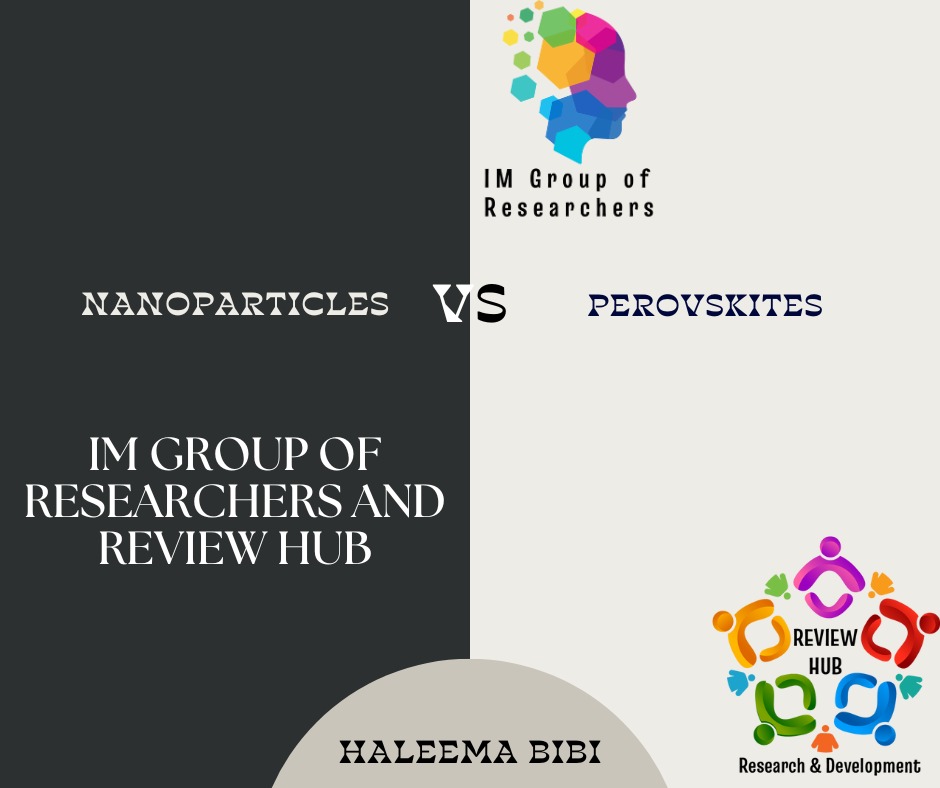Nanoparticles vs. Perovskites: A Guide to Tiny Marvels. Ever heard of nanoparticles and perovskites? Don’t worry if you haven’t; they’re like the silent heroes of the scientific world, making waves in different fields. Let’s take a casual stroll through what makes these tiny things so special.
Author: Haleema Bibi
Nanoparticles
What are They?
Nanoparticles are like the rockstars of the microscopic world, being tiny particles that are smaller than the width of a human hair. They can be made of various stuff like gold, silver, or even polymers – think of them as the versatile mini pieces of science.
Types of Nanoparticles
Metal Nanoparticles: Picture these as the cool metallic ingredients used in things like medical imaging and high-tech sensors.
Seniconductor Nanoparticles: Meet the quantum dots; they’re like the superheroes of electronics, making our gadgets smaller and more powerful.
Polymer Nanoparticles: These are the flexible ones, used in drug delivery systems and creating super materials.
How Are They Made?
Making nanoparticles is a bit like cooking; scientists use techniques such as mixing chemicals, laser magic, or even playing with tiny balls to create these microscopic wonders.
Checking Them Out
Scientists use extravagant microscopes to know more about the nanoworld and recognize what these particles look like. It is like a super microscope to perceive the tiniest details, helping us recognize how they perform and what they can do.
Recent Buzz
Lately, nanoparticles are like the cool kids making breakthroughs in delivering medicine straight to where it’s needed, making gadgets even smarter, and shining in the world of optics.
Future Vibes
Imagine a future where these tiny heroes play a big role in personalized medicine and help create materials that are not just smart but also eco-friendly.
Perovskites
What’s the Deal?
Perovskites are like the trendy kids in the materials world, especially the ones with a mix of organic and inorganic elements. They got famous for their role in solar cells and other cool gadgets.
Different Types
Inorganic Perovskites: These are like the traditional perovskites without any fancy organic stuff, finding use in things like fuel cells and sensors.
Organic-Inorganic Hybrid Perovskites: These are the cool hybrids, blending organic and inorganic elements to rock the world of solar cells and other flashy devices.
How They are Made?
Making perovskites involves some scientific mixing and matching, like crafting a perfect recipe. Scientists use methods that sound complex but involve essentially playing around with solutions to get the right mix.
Getting to Know Them
Just like nanoparticles, scientists use advanced tools like optical microscope and spectrometry to realize what perovskites are made of and by what means they can regulate in different applications.
Recent Wins
Perovskites have their moment, particularly in the solar energy section. Solar cells, that can made with perovskites are pretty more effective and stronger, giving outdated silicon cells a run designed for their money.
Future Spotlight
Keep an eye out for perovskites illuminating our lives – from energy-efficient lighting to better sensors. They might even play a key role in the next-gen solar technologies, making our energy sources greener and more sustainable.
Conclusion
So, there you have it – a glimpse into the fascinating worlds of nanoparticles and perovskites. From delivering medicine in style to making our gadgets smarter and our energy sources cleaner, these tiny wonders are shaping the future in ways we might not even realize yet. Who knew that things so small could have such a big impact?
Also read: Unlocking the Molecular Universe: Essential Tools and Software in Computational Chemistry
Follow Us on

